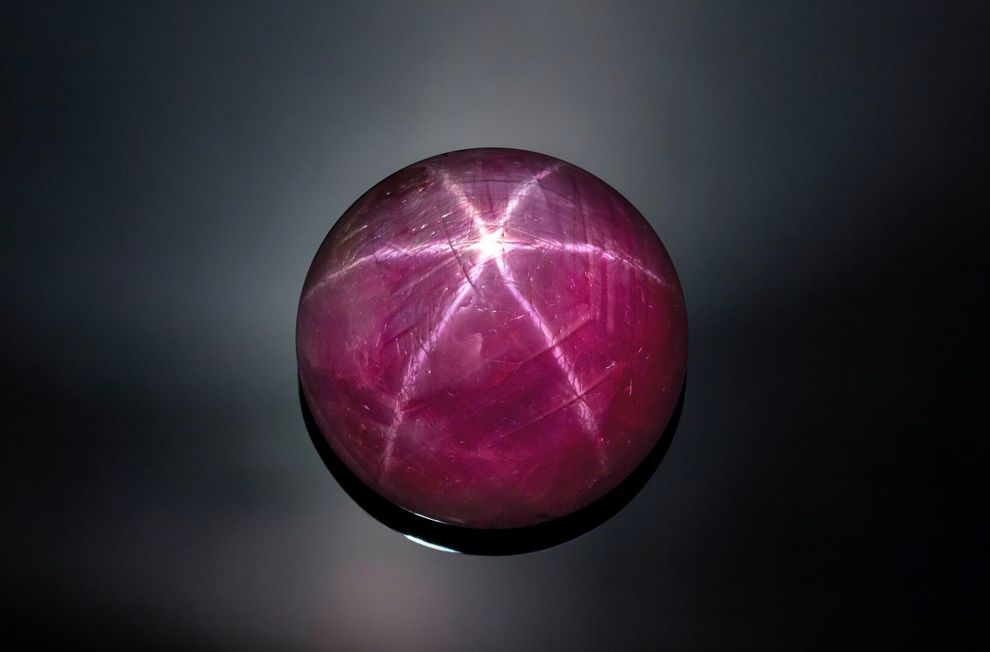
EXTREMELY RARE STAR RUBIES FOUND BY FISHING GUIDE COULD FETCH MILLIONS
17.04.18
In 1990, a self-described "rock hound" was walking along a stream bed in the western mountains of North Carolina when he came upon trace amounts of corundum, the mineral responsible for rubies and sapphires. Living as a fishing guide, Wayne Messer had a passion for geology.
Alan Ettinger, founder and president of the auction house Guernsey's, told Garden & Gun "He'd often see something in a stream bed that drew his attention, and he'd trace it back to some origin and dig into the ground to follow the trail, for this particular find, he had to dig about eight feet down."

The Appalachian Star Ruby displayed at the Smithsonian Intsitution's Museum of Natural History
Messer discovered four extremey rare star rubies totalling 342 carats at an undisclosed site.
"When I found it, there was a red-tailed hawk that soared right over me, I knew it was something special, but I didnt't realize how important the stones would be" Messer told local talk show North Carolina "Now" in an early 1990's interview.
One of the gems, nicknamed the "Appalachian Ruby Star." is considered one of the largest star rubies ever dscovered. It weighs 139.43 carats, only slightly larger that the 138.72 carats Rosser Reeves Star Ruby, currently on display at the Smithsonian.

The Misty Star Ruby weighs 52.37 carats and exhibits near perfect "asterism" when reflecting light
It takes an expert to cut a rare star ruby, revealing the brilliant star pattern transforming into a cabochon. Light is reflected off titanium needle-like crytals trapped within the stone. Called an asterism, this optical phenomenon is also present in other gems such as sapphires.

The Smokey Mountain Two Star Ruby at 86.56 carats
Messer said in a 1994 interview "I realized what we had found when I made my first cut, the star just popped right out. Right from the beginning. I could see it portrayed attrubutes that no other stone has."

The promise Star Ruby measures 64.17 carats and features a perfectly cantered star
The stones will only be sold together according to Ettinger, preserving the collection as discovered by Messer.
We agree it would be crazy to destroy a collection of 4 matching stones. We wait to see what value the world places on these rare gems.
IGR London
Photo credit: Guernsey's




